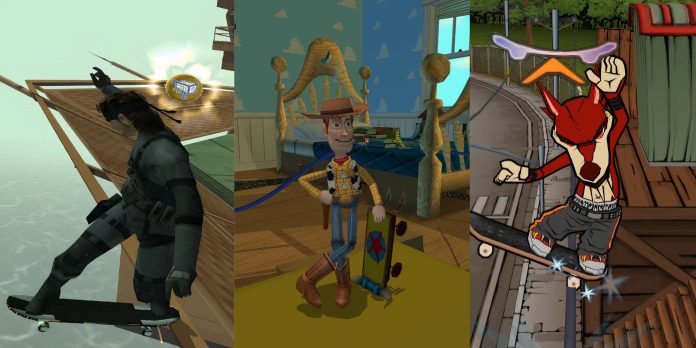
Sign in to your DualShockers account
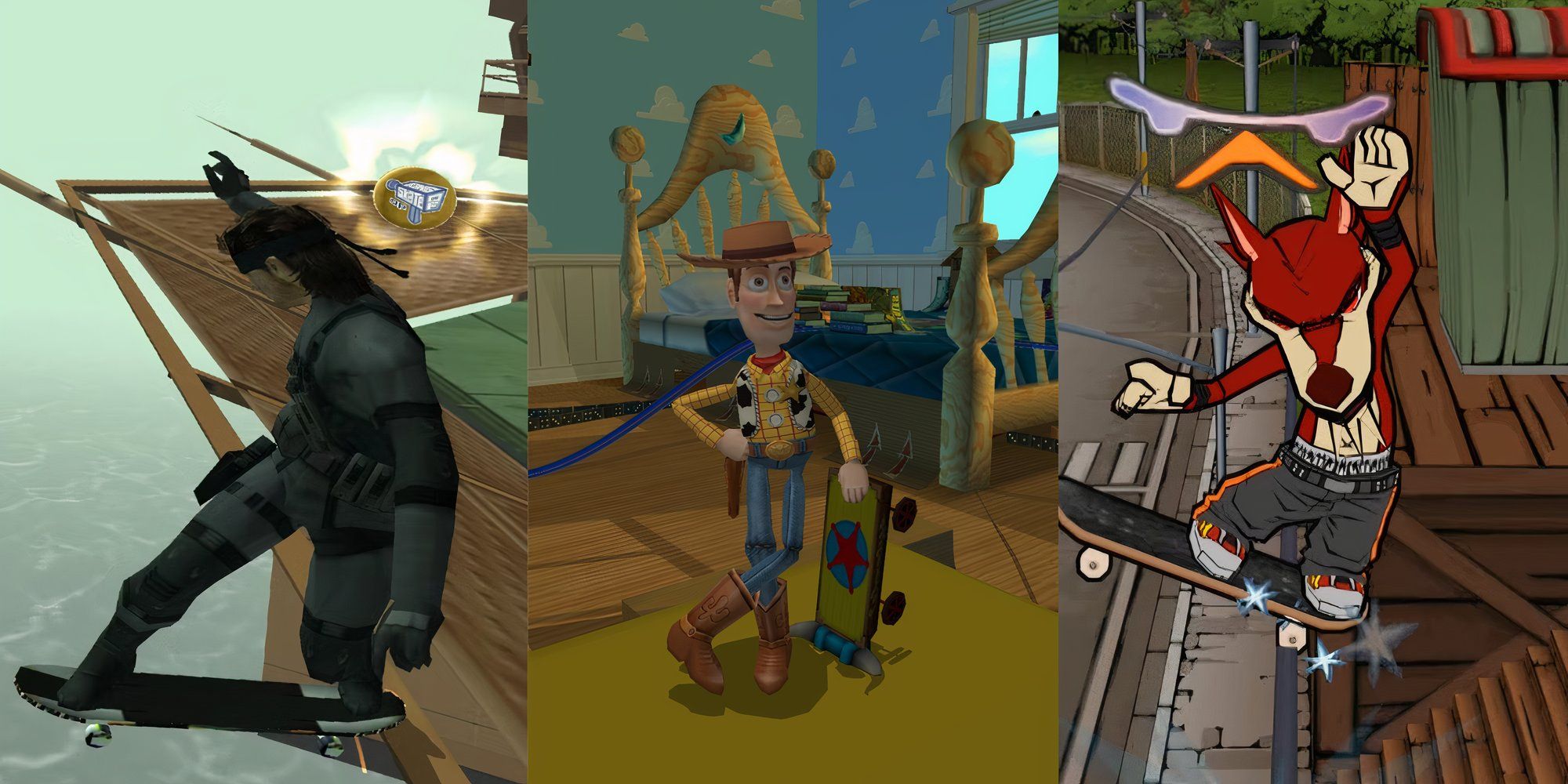
When Tony Hawk’s Pro Skater made its debut in 1999, it would set the stage for many skateboarding video games to come. Most of the genre’s success came in other video games starring the Birdman, which drove several other video game studios to try and copy the formula.
While some of these copycat games got a chilly reception, like The Simpsons Skateboarding, others were able to prove they were worthy additions to the THPS-adjacent universe. However, none of them were quite able to reach the heights that Activision and Neversoft’s offerings could, and because of that, very few of them got sequels.
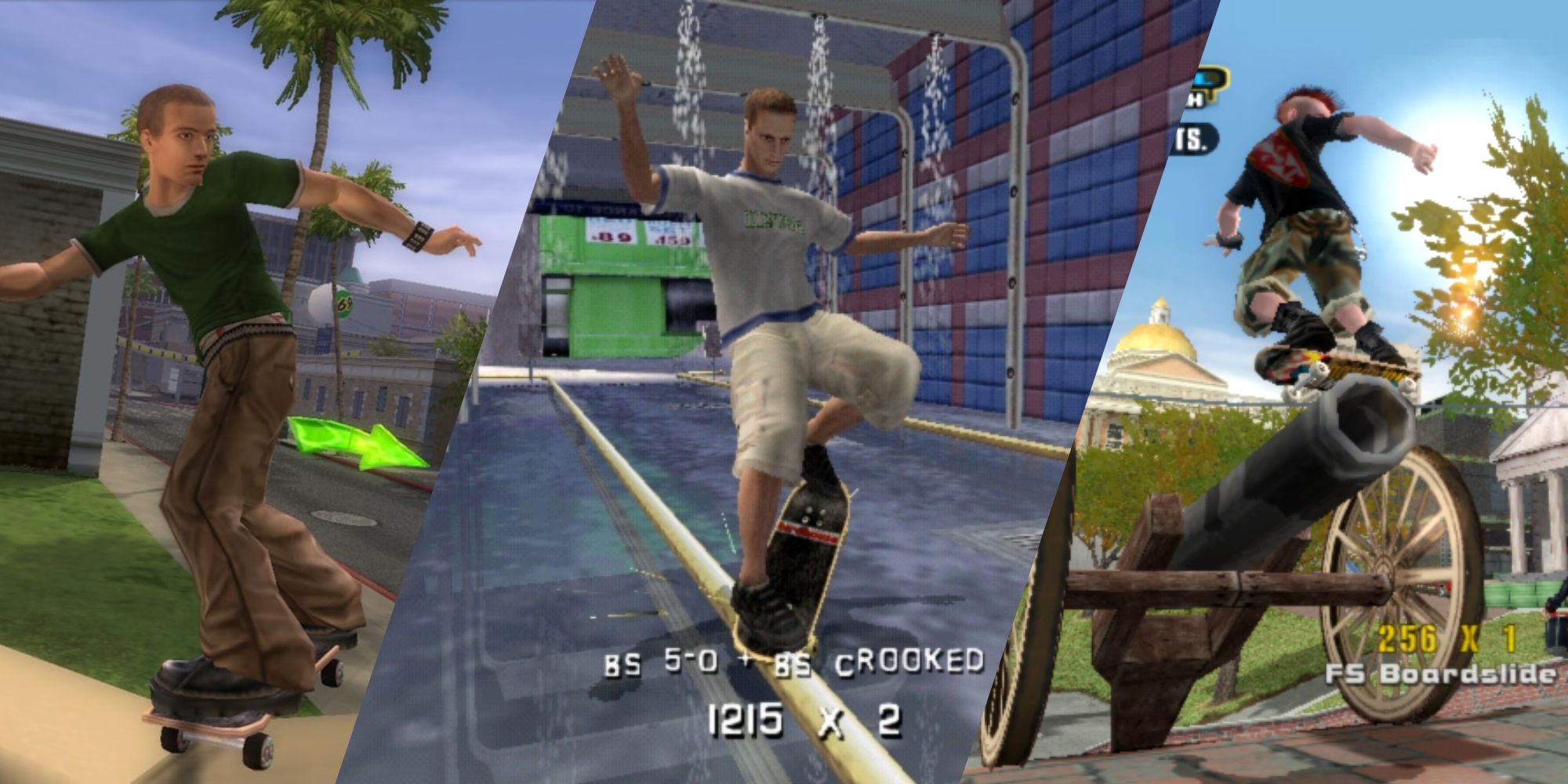
Related
Every Tony Hawk Game, Ranked
Drop in and enjoy a jam session as we rank every game in the Tony Hawk franchise.
Of course, to stand out from the pack, many of these games put their own unique gimmick front and center. Whether it was a change in setting, the use of established characters, or even trying to use the formula for a different sport altogether, these games made a name for themselves in fascinating ways.
There have been dozens of games inspired by Tony Hawk’s Pro Skater, but I am going to limit this down to ten titles that I feel do a good job at showing the influence Tony has had on the world of gaming.
To be considered a Tony Hawk clone, the video game in question must have been released after the original Tony Hawk’s Pro Skater came out in 1999.
10 AirBlade
A Futuristic Take On The Birdman
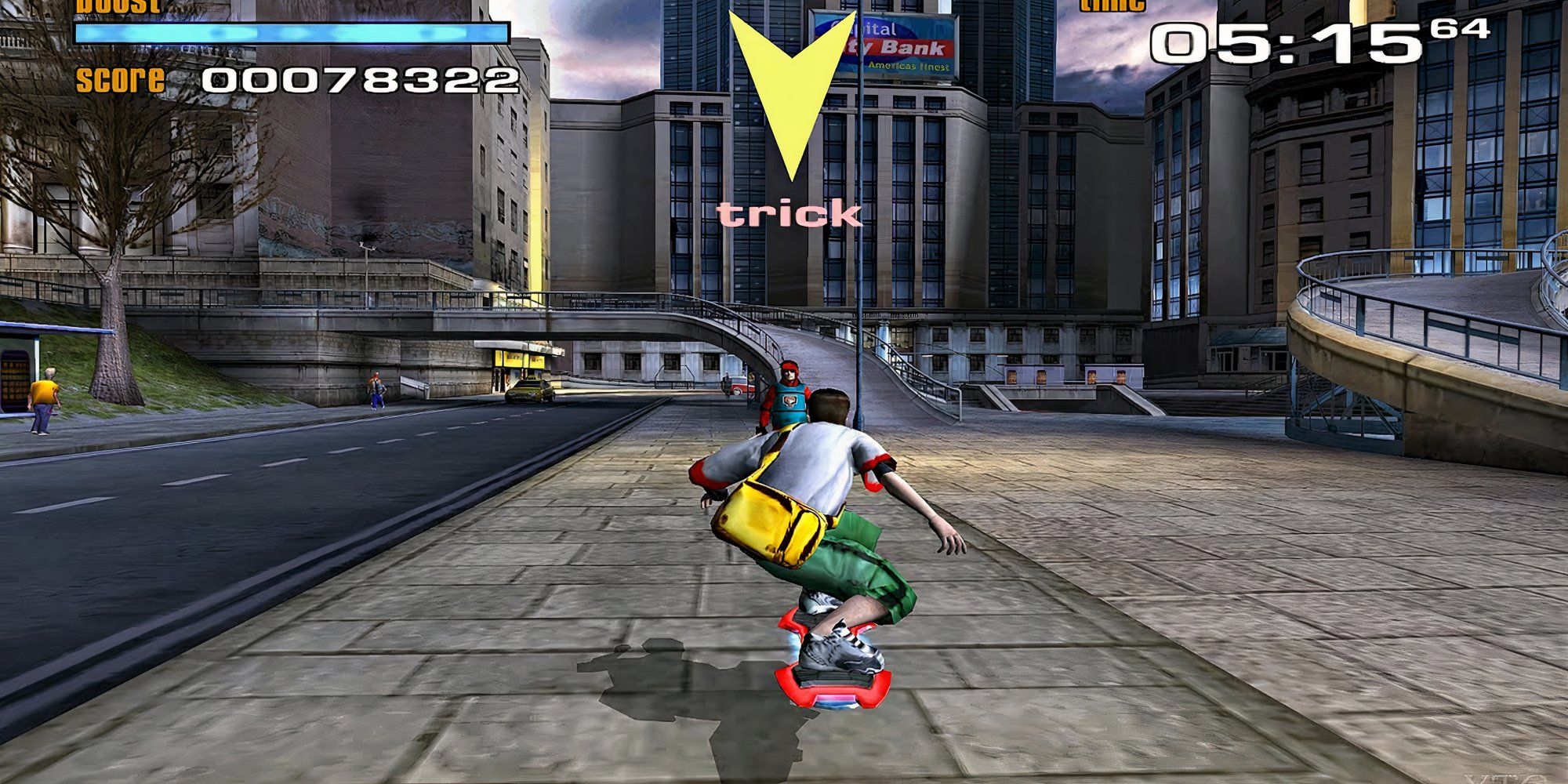
AirBlade
Today, Criterion Games are synonymous with car racing games, with the Burnout games being a cultural phenomenon throughout the 2000s and the studio taking the steering wheel on Need for Speed starting in 2010. But it was a pair of hoverboard games, Trickstyle and Airblade, that helped first get their foot in the door.
While Trickstyle was a standard hoverboard racing game in the vein of Sonic Riders, Airblade was more of a pure THPS clone, with an emphasis on missions and tricks. And while Trickstyle did do a good job providing a blueprint for games like Riders, Airblade’s uniqueness means there’s more of a reason to revisit it.
The hoverboard technology gives players plenty of opportunities they don’t have with skateboards, such as bigger jumps and the occasional speed boost. It is a bit disappointing, however, that the hoverboards didn’t have unique abilities to make them stand out more from skateboards.
Airblade also had its own story mode two years before Tony Hawk’s Underground, in which a teenager has to stop a fossil fuel company who wants to destroy all hoverboards for profit. While a futuristic fight against an evil corporation is hardly a groundbreaking video game storyline, it’s still tons of fun to play.
Despite being a cult favorite, it sold poorly, and with Burnout starting around that same time, Criterion’s focus turned elsewhere. Still, it was a solid but flawed attempt to apply the THPS formula to a more futuristic setting, and I feel it could have found its footing like Burnout did had Criterion not abandoned the IP.
9 Street Sk8er 2
A More Linear Experience
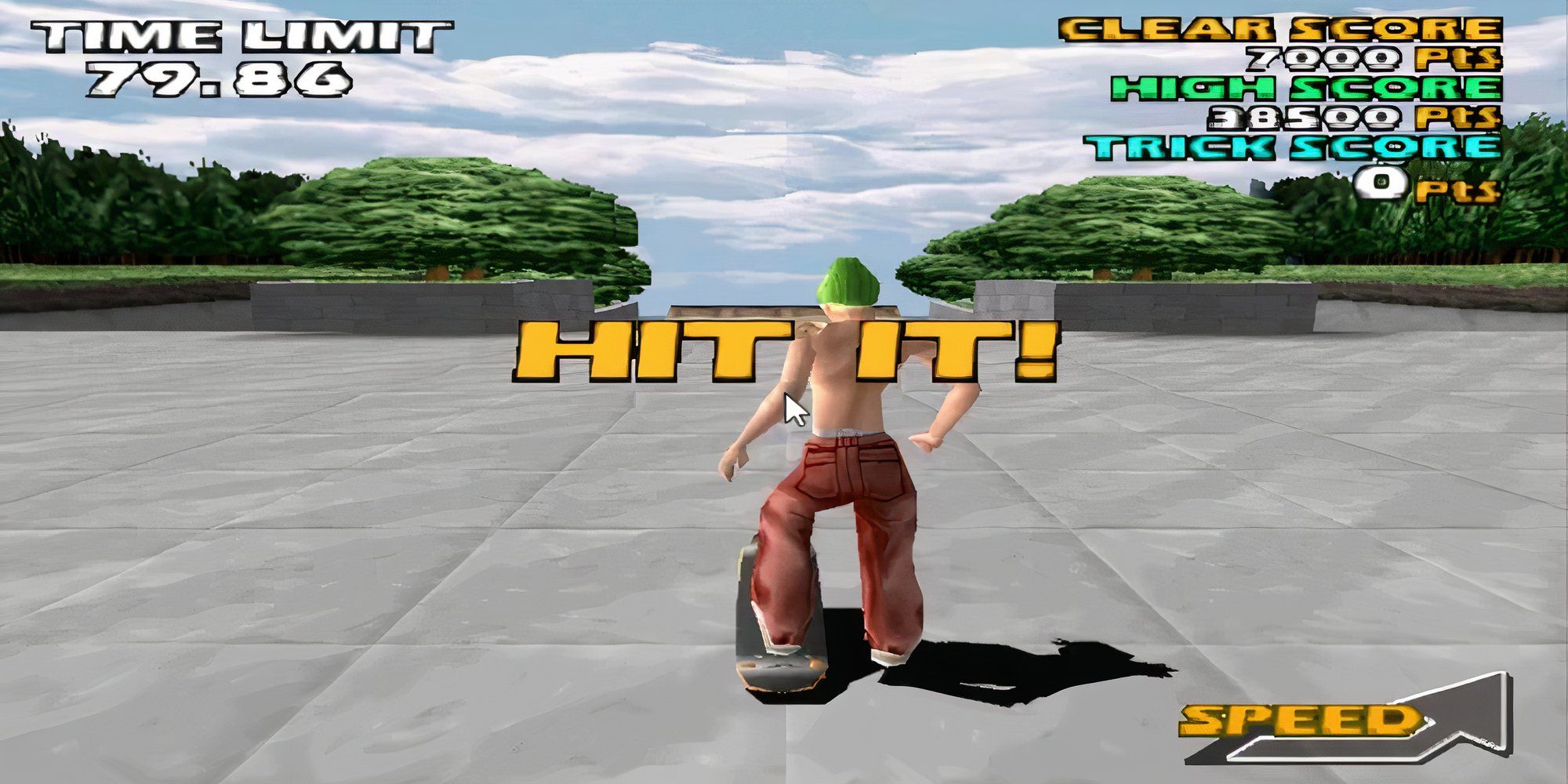
Street Sk8er 2
Calling the original Street Sk8er from 1999 a Tony Hawk clone would be inaccurate, given that the original THPS was released half a year later. Following the lackluster first entry, EA looked to the Birdman’s debut as a template for improvement, and one year later, the vastly superior Street Sk8er 2 came out.
In contrast to Tony Hawk games, Streek Sk8er 2 has a linear level design, with players having to reach the finish line before the time limit expires and checkpoints resetting the clock. However, unlike a standard racing game, it also encourages players to do tricks for high scores.
While it’s a fresh alternative to the Tony Hawk formula, meshing the gameplay styles of racing and skating into one game doesn’t always work out, as Tony Hawk’s Downhill Jam later proved. Additionally, a lack of satisfying unlockable content and a complicated rail-grinding mechanic lowers its replayability value.
Still, Street Sk8er 2 felt like the most formidable rival to the Tony Hawk series during the latter’s earliest days, and there was definitely potential for more success had the series not stopped after this entry. Activision would later adapt Street Sk8er’s linear level design for Tony Hawk’s Downhill Jam, while EA would get back into the skateboarding genre with Skate in 2006.
8 Grind Session
The First True Tony Hawk Clone
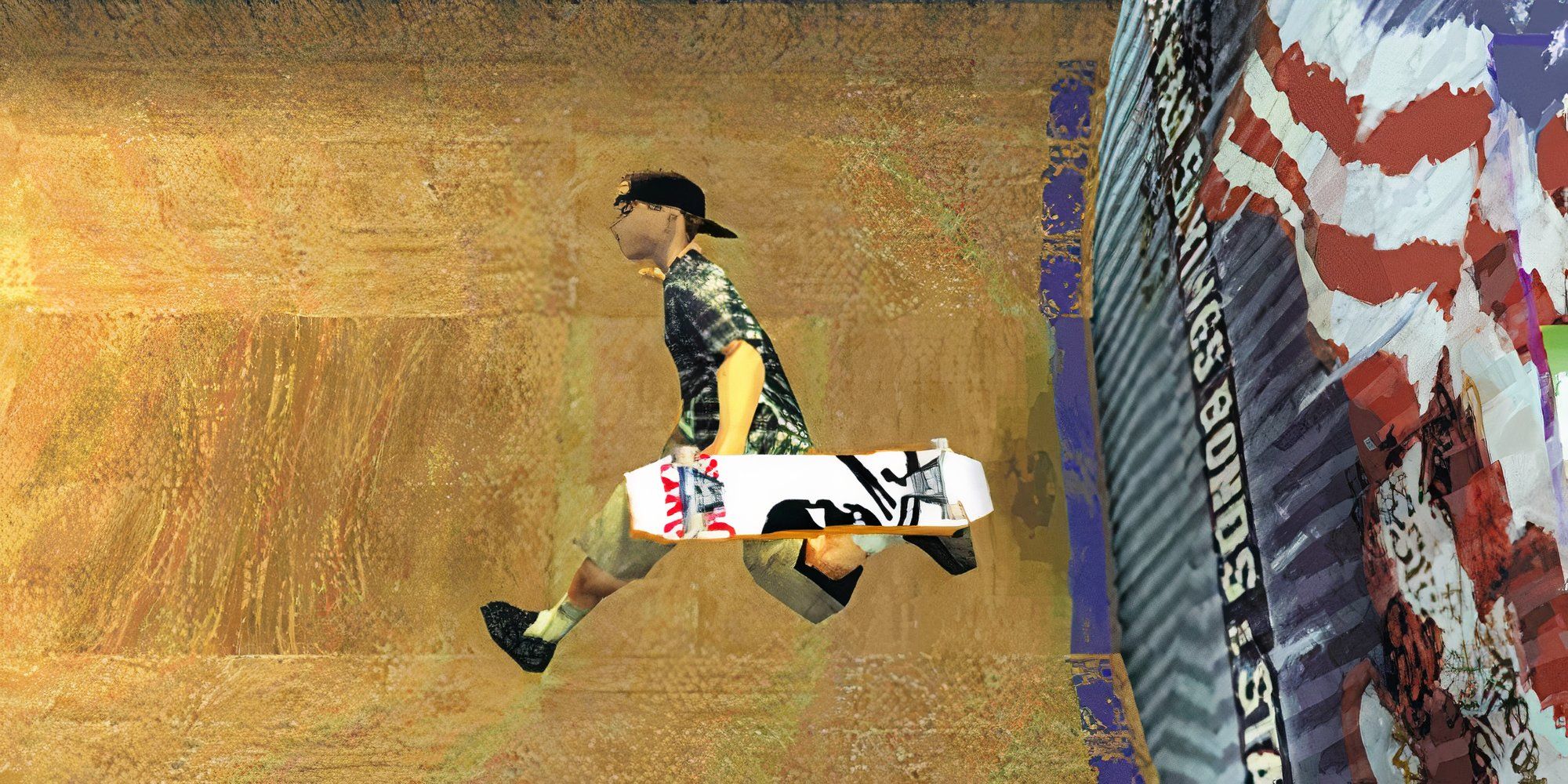
Grind Session
Grind Session, released in 2000, is notable as a Tony Hawk rival because it was the debut project of Shaba Games, who would go on to be involved in the actual Tony Hawk franchise itself due to their work on several last-generation and handheld ports of mainline entries.
In contrast to Street Sk8er 2, Grind Session is a more by-the-book copycat of Tony Hawk’s Pro Skater, with a focus on high scores and completing missions in the main game modes. It also contains a line-up of real-world professional skateboarders, some of whom found their way into future Hawk games.
There are some that still even swear that Grind Session was better than the OG THPS, although it’s been eclipsed by its sequels in the coming years. And it’s obvious that Activision noticed, as several aspects of Grind Session would be incorporated into THPS later on.
While it was a solid outing by Shaba, it was never able to compete commercially with Tony Hawk, and thus, no sequel was ever greenlit. Still, Grind Session’s lasting legacy was being one of the first of countless attempts by other studios to try and dethrone, and later inspire, the Hawk.
7 Backyard Skateboarding
Kids Can Grind Too
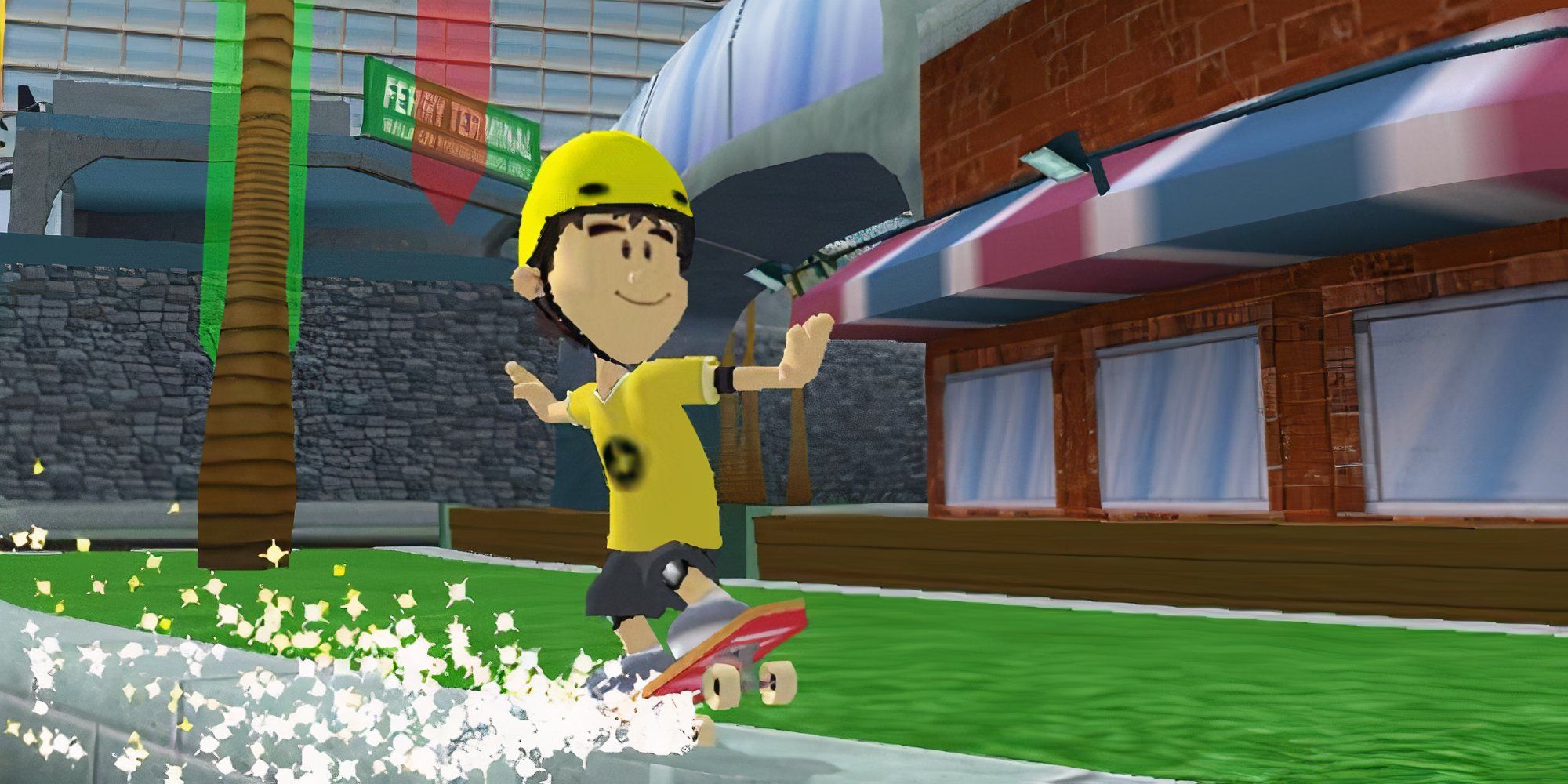
|
Release Date |
October 4, 2004 |
|
Developer |
Humongous Entertainment |
|
Genre |
Skateboarding |
|
Platforms |
PC, Game Boy Advance |
Humongous Entertainment’s Backyard Sports series was created as an attempt to introduce children to the world of professional sports, and alongside its iconic line-up of original characters, its biggest selling point was its inclusion of kid versions of famous professional athletes. These games were a huge part of my childhood, with Backyard Basketball and Backyard Hockey being my favorites.
After several games about team sports, the series went in a new direction in 2004’s Backyard Skateboarding, with its 3D graphics and single-player campaign mode being a drastic departure from previous Backyard Games. While a faithful clone to Tony Hawk, its roster was rather underwhelming compared to the thirty-plus characters the series usually has.
The game went largely unnoticed by both skateboarding fans, who were mostly way too old to get into Backyard Sports, and fans of the franchise, which was waning in popularity around that time. The lack of a console release, where the skateboarding genre thrived the most, didn’t help matters.
That being said, people who played this title largely enjoyed it, and I consider it a hidden gem in the Backyard Sports series, even if far from the best the series has to offer. I had mostly grown out of the series by the time Backyard Skateboarding came out, but I would have loved to give it a chance if I could be my 2004 self again.
6 Go! Go! Hypergrind
Skating Gets Looney
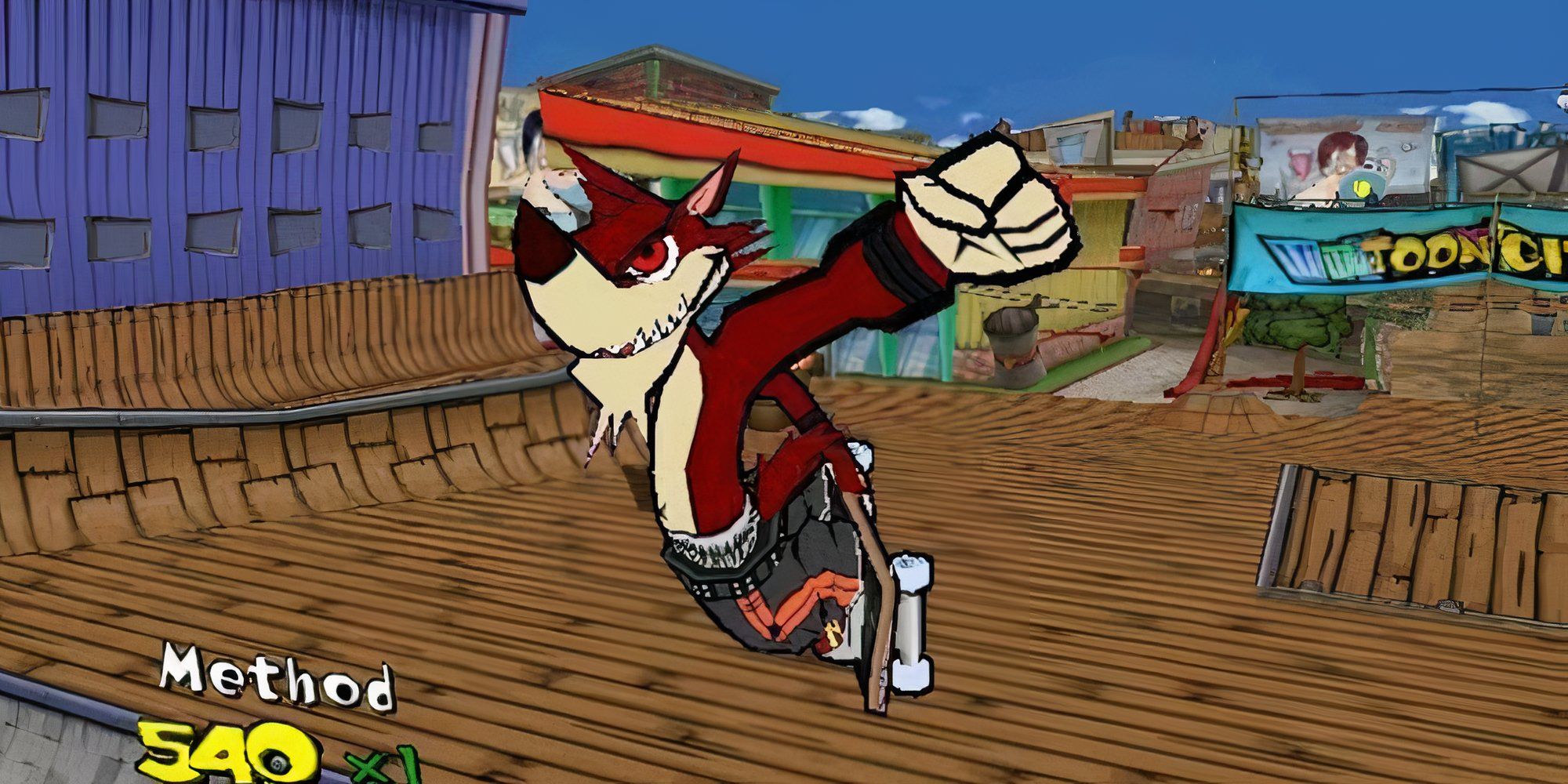
Go! Go! Hypergrind
- Released
- November 18, 2003
- ESRB
- T for Teen – Crude Humor, Suggestive Themes, Violence
- Developer(s)
- Poponchi
- Publisher(s)
- Atlus
- Multiplayer
- Local Multiplayer
- Platform(s)
- Nintendo GameCube
- How Long To Beat
- 4 Hours
One of the weirdest skateboarding games of all time came out in 2003, when Atlus, the company behind the Shin Megami Tensei and Persona series, teamed up with Spumco, the animation studio behind Ren & Stimpy, to create Go! Go! Hypergrind. This oddball combination didn’t exactly sell like hotcakes, but critics liked it, and it developed its own cult following in recent years.
The game takes place in Toon World, where the rise of CGI animation threatens to put traditional 2D cartoons out of business. As a last-ditch effort to save traditional animation, Spumco creates a skateboarding show called Go! Go! Hypergrind and runs a competition to find the best animal skater to lead their show.
The game manages to strike the right balance between a slapstick animated show and a skating video game, as characters must both perform the best skateboarding tricks while suffering wacky cartoon injuries in the process. The roster also has some outlandish cartoon characters that make the Looney Tunes look tame, and I wouldn’t expect any different from John Kricfalusi.
Traditional skateboarding game fans might find Go! Go! Hypergrind a bit too silly for their tastes, but fans of raunchy animation and slapstick comedy will find enjoyment in the game’s dense humor and colorful artstyle. No sequel was ever made, and indeed, Poponchi, the team-up studio formed by Atlus and Spumco, ended up being a one-off.
5 Evolution Skateboarding
Solid Snake’s Pro Skater
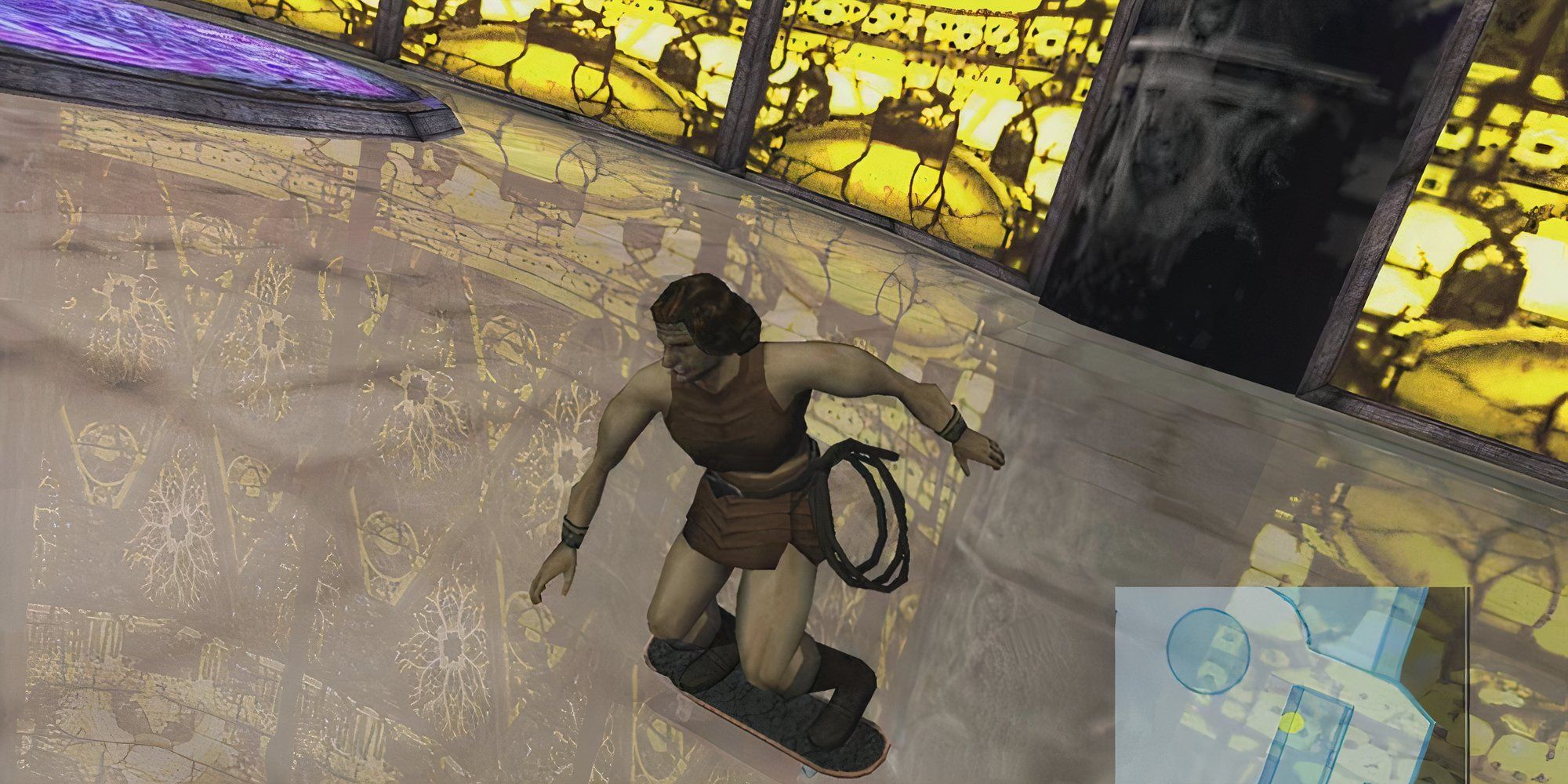
|
Release Date |
October 9. 2002 |
|
Developer |
Konami |
|
Genre |
Skateboarding |
|
Platforms |
PlayStation 2, GameCube, Game Boy Advance |
Konami’s Evolution Skateboarding was not well-received when it first came out in 2002, as it was seen as little more than a shameless Tony Hawk rip-off that failed to make any meaningful improvements to set it apart from Activision’s juggernaut. Thus, American consumers mostly ignored the game in favor of Tony Hawk’s Pro Skater 4, which was released around the same time.
However, the game found its audience in Japan, where the Tony Hawk series never achieved the same popularity and consumers were drawn towards their own country’s take on the Western-dominated genre. And unlike the bland ESPN X Games Skateboarding, they gave their next venture onto the ramp their own Konami twist.
The most notable thing Konami did to make the game feel like their own was add several of their own characters as guests, like Solid Snake, Simon Belmont (or “Vampire Hunter” as he was called here), and Frogger. Boss battles, like the kind players would expect in a Metal Gear or Castlevania game, were also incorporated.
The game has its fair share of flaws, namely stiff physics and a hard-to-learn control scheme, and many players wrote off the game because of that. But I think the game should be enjoyed for what it is, and Evolution Skateboarding has proven itself to be one of the more interesting Tony Hawk copycats.
4 Shaun White Skateboarding
Leaving The Snow Behind
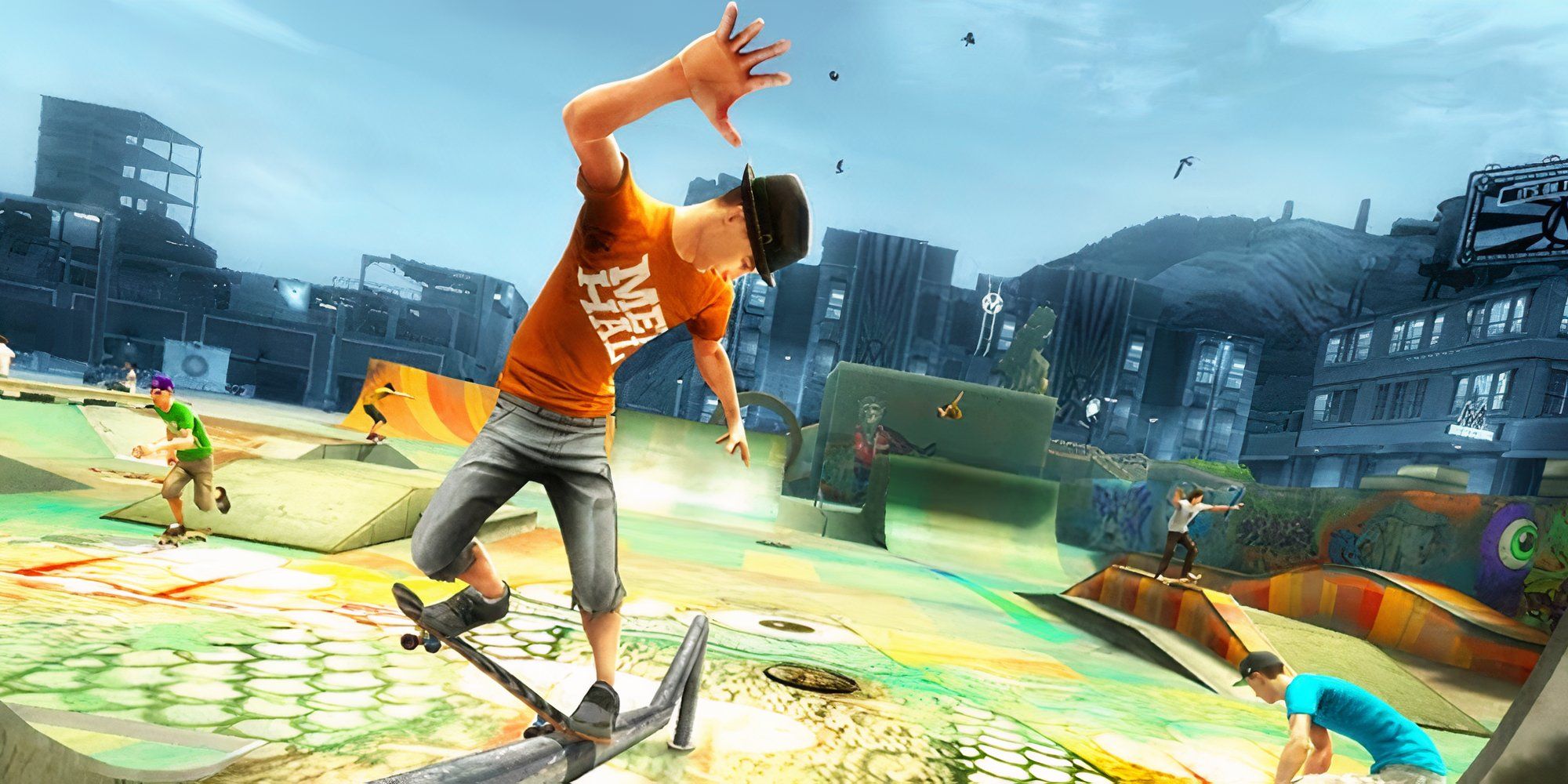
|
Release Date |
October 24. 2010 |
|
Developer |
Ubisoft Montreal |
|
Genre |
Skateboarding |
|
Platforms |
PlayStation 3, Xbox 360, Wii, PC |
For many people who grew up in the 2000s, Shaun White is to snowboarding what Tony Hawk is to skateboarding, so it seemed inevitable he’d be the face of his own snowboarding video game franchise one day. Ubisoft delivered in 2008 with Shaun White Snowboarding, and while that was one of the less interesting snowboard titles, it was the follow-up that surprised everyone.
Rather than find a new skateboarder to helm a spin-off, Ubisoft had the Flying Tomato trade in his snowboard for a set of wheels, given that he was a pretty prolific skater in real life, too. Its gameplay is a solid hybrid of both the Tony Hawk and Skate video game series, but what really stood it apart was its over-the-top plot.
An evil organization called The Ministry has brainwashed everyone in the world to be dull and emotionless, and most recently, they have kidnapped the beloved Shaun White. Your character, a friend of Shaun’s, has to save the day.
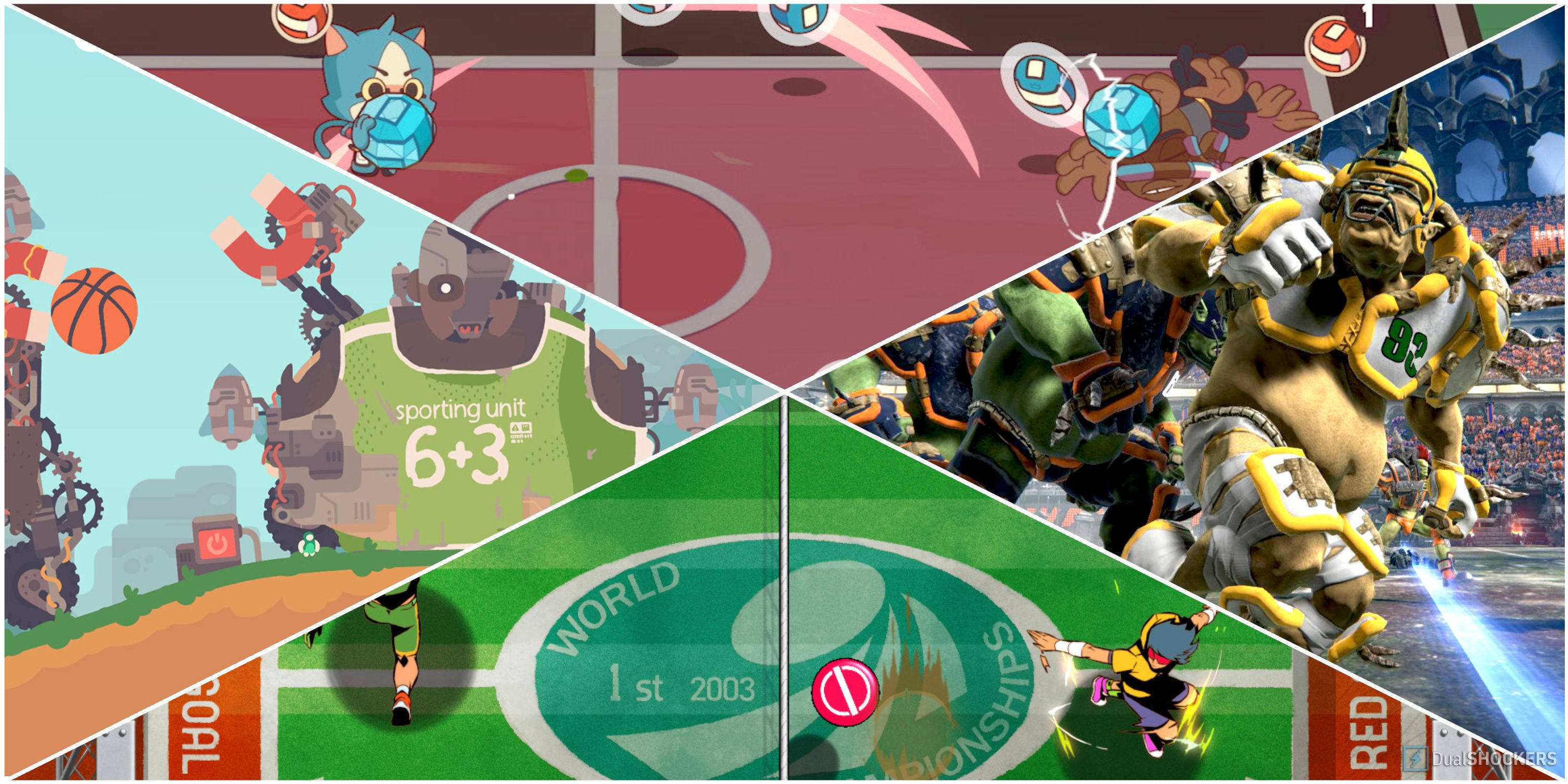
Related
10 Sports Game Hidden Gems
There are a variety of sports and sports-adjacent video games that could do with some extra attention.
Fittingly, the world of the game is also gray and colorless, because The Ministry has sucked all the life out of it. However, by being the best skater possible, players are tasked to free both the world and its inhabitants from the Ministry’s mind control.
Beyond the novelty of its storyline, the game did little to stand out from the pack, and it was released right as the skateboarding video game craze was dying down. Thus, despite decent reviews, the game didn’t sell that well, and Shaun White never starred in another video game again.
3 Aggressive Inline
New Sport, Same Style
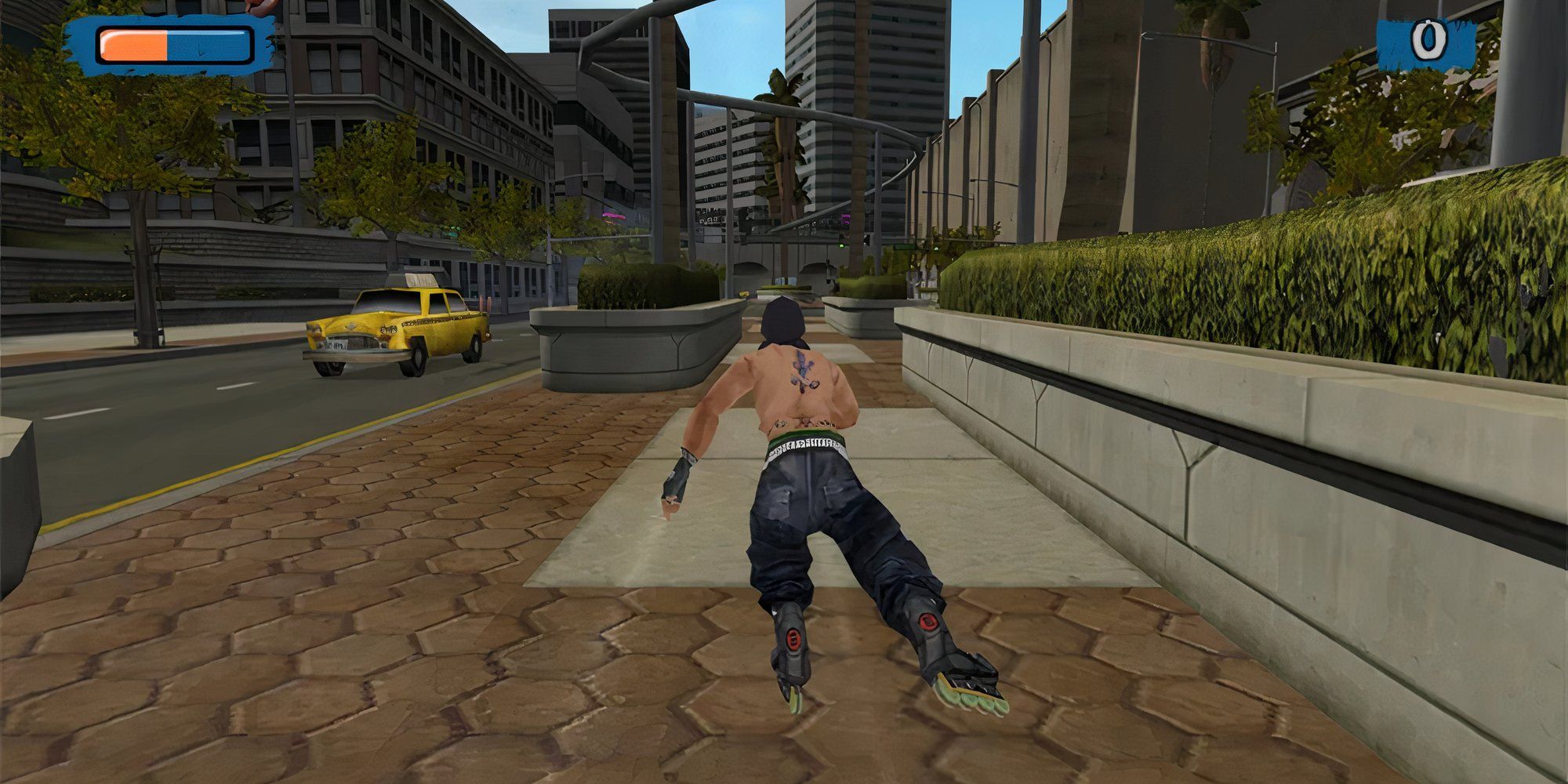
|
Release Date |
May 28, 2002 |
|
Developer |
Z-Axis |
|
Genre |
Inline Skating |
|
Platforms |
PlayStation 2, GameCube, Xbox, PC |
There have been a handful of times when the Tony Hawk formula was applied to a different sport entirely, and no developer was more devoted to this mission than Z-Axis.
Z-Axis are most famous for their BMX games, namely the two Dave Mirra games from 2000 and 2001 and the highly controversial BMX XXX in late 2002, but in between that came the largely forgotten Aggressive Inline.
Inline skating never achieved the same cultural relevance as skateboarding, or even BMX, so Aggressive Inline didn’t garner much attention when it hit store shelves in the middle of 2002. But THPS fans noticed that not only did it feel like a Neversoft title, but that it innovated several concepts the skateboarding juggernaut would take inspiration from.
The traditional time limit was replaced by a Juice Meter, the game’s equivalent to a health bar. An RPG-style level-up system was implemented, giving players new tricks as they got better, and while some like it, I never really cared for RPGs at the time and preferred Tony Hawk’s simplicity.
While the game was well-liked by critics, it largely languished in the shadow of Tony Hawk and was a commercial flop. This, plus the massive controversy surrounding BMX XXX later that year, led to Z-Axis leaving the extreme sports genre altogether.
2 Disney’s Extreme Skate Adventure
Cartoon Icons Hit The Ramps
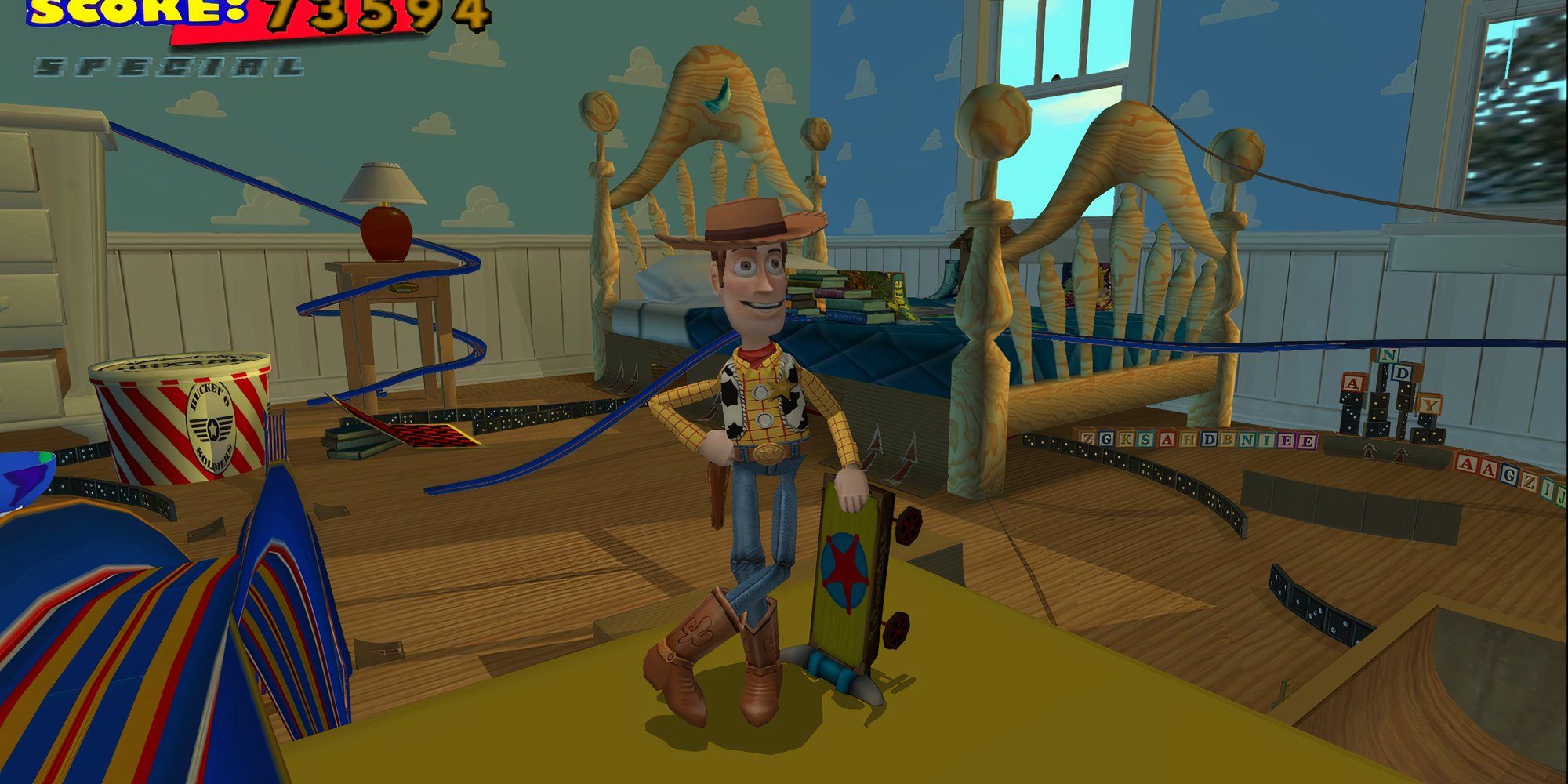
Disney’s Extreme Skate Adventure
Of all the Tony Hawk clones that flooded the market in the 2000s, Disney’s Extreme Skate Adventure may be the closest to being an actual spin-off of the series, given that Activision published it, and it directly used the Tony Hawk’s Pro Skater 4 engine, but featuring Disney properties like Toy Story and The Lion King.
Toys for Bob, later of Skylanders and Crash Bandicoot fame, would helm the project, and they’d do a serviceable job making the game feel like a real Tony Hawk game, but with Disney characters.
The game’s controls were overly simplified in comparison to Tony Hawk, so hardcore THPS fans may scoff at it, but it’s a perfect fit for its younger target audience.
In addition to Disney characters, two real-life children won a contest to be playable characters in the game. There was also a standout soundtrack with a mix of pop-punk, nu-metal, and teen pop.
It’s quite a bit disappointing that no sequel was ever developed, given there was potential for a lot more Disney IPs to get the Extreme Skate Adventure treatment, like Kim Possible, The Incredibles, and Aladdin, among others. Still, it’s one of Disney’s best licensed games, and it got a new generation of children into skateboarding.
1 Dave Mirra Freestyle BMX 2
Tony Hawk, But With Bikes
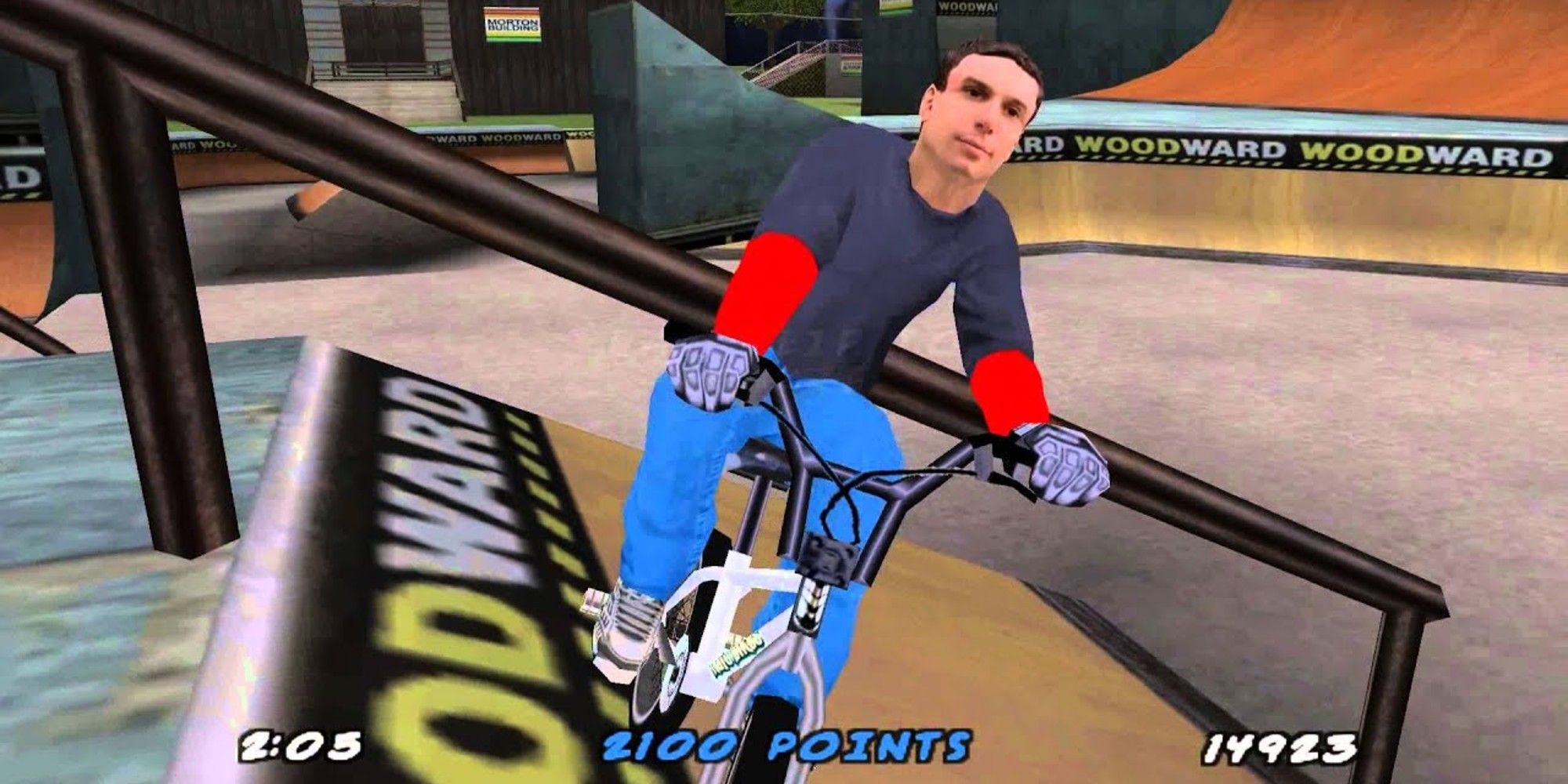
Dave Mirra Freestyle BMX 2
If there’s one sport that truly was able to compete with the likes of skateboarding in the early 2000s, it’s BMX biking. While several companies have tried their own BMX game series, including Activision themselves with Mat Hoffman’s games, it’s Acclaim’s Dave MIrra Freestyle BMX 2 that set the standard for the genre to come.
Other than the change in vehicle, the game felt exactly like a THPS clone, and a very fun one at that. The controls were easy to master, the levels were fun to play and well-designed, and it always felt like there was something new to discover every time you picked up the controller.
Dave Mirra 2 also had a ton of secret content that kept players engaged, as, like with Tony Hawk games, there’s a weird line-up of secret characters, like the Slim Jim mascot. Creating your own BMX parks in the park editor is just as exciting here as it is in THPS.
The game’s biggest drawback is probably its graphics, which lacked a lot of the detail that Tony Hawk’s Pro Skater 3, released that same year, had. Still, it’s just a minor hiccup, and the game is not bad looking at all.
Unfortunately, BMX games were never able to compete with skateboarding, and after the failure of the… questionable Mirra-less follow-up BMX XXX, the series, and for that matter, the entire genre, went out of style. It’s unlikely we’ll see a Dave Mirra revival given he passed away in 2016, but I’m glad BMX got its well-deserved time in the spotlight, even if only for a year or two.
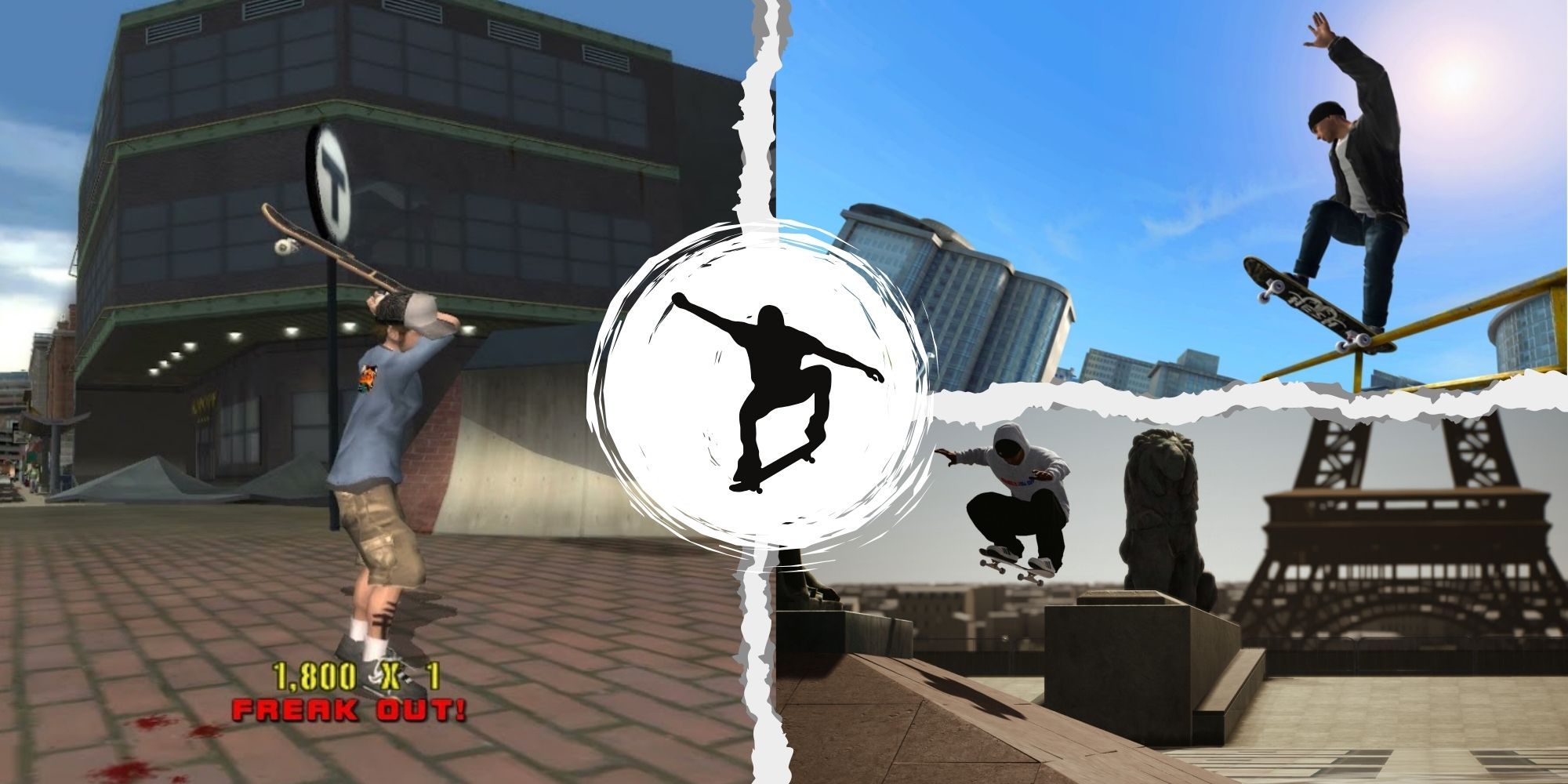
Related
15 Best Skateboarding Games, Ranked
Shredding the Gnar doesn’t stop just because you head home from the skatepark!
